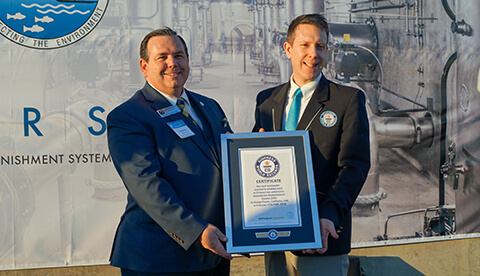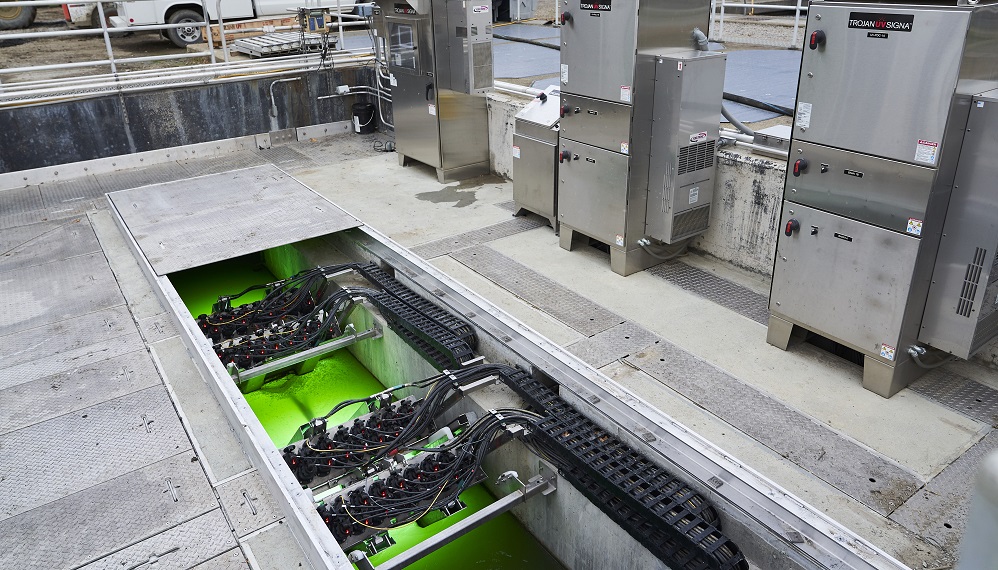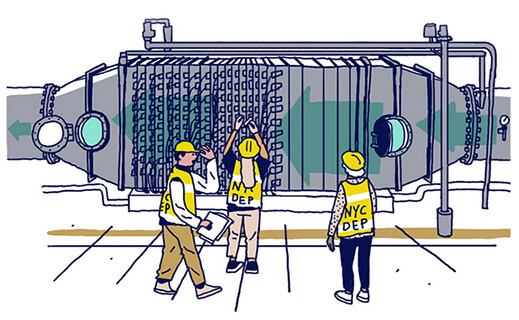How The Pandemic Drives Legionella Concerns
Even before COVID-19, Legionella had the distinction of being one of the leading water-borne disease agents in the USA, with reported cases growing more than five-fold from 2000-2017 (CDC). But now, as COVID-19 and stagnant water due to building closures collide, the threat increases.
What is Legionella?
Legionella bacteria occur naturally in warm, freshwater environments, like lakes and streams. They become problematic to health when they grow in plumbing systems, particularly where biofilm has developed on pipe walls, and then spread as water is distributed throughout the building. To cause infection, Legionella must be aspirated making showerheads, water fountains, cooling towers, and, less commonly, taps and drinking fountains points of contamination. In high risk populations, Legionella infection can cause a serious type of pneumonia. The simplest way to prevent infections is to keep Legionella out of building water systems.
UV Treatment is a proven solution for preventing Legionella contamination of building water systems, and is suitable for:
- Hospitals and healthcare facilities
- Schools
- Office and commercial buildings
- Homes
UV can be applied at the point-of-entry as a complementary treatment barrier for the whole building or at point-of-use for high risk areas within a plumbing system. Different species of Legionella require different UV dose levels for inactivation. However, in general, required doses are low and well within the operating parameters of our range of UV systems.
| Legionella Species | 3-log | 4-log | 5-log |
|---|---|---|---|
| Legionella Bozemanii | 3.5 mJ/cm2 | 4.7 mJ/cm2 | 5.83 mJ/cm2 |
| Legionella dumoffi | 5.5 mJ/cm2 | 7.33 mJ/cm2 | 9.17 mJ/cm2 |
| Legionella gormanii | 4.9 mJ/cm2 | 6.55 mJ/cm2 | 8.17 mJ/cm2 |
| Legionella micdadei | 3.1 mJ/cm2 | 4.13 mJ/cm2 | 5.17 mJ/cm2 |
| Legionella longbeachae (found in potting soil) |
2.9 mJ/cm2 | – | – |
| Legionella pneumophila (legionnaires disease) |
3.8 mJ/cm2 | 5.1 mJ/cm2 | 6.33 mJ/cm2 |
| Legionella interrogans (infectious jaundice) |
6.0 mJ/cm2 | – | – |
Controlling Legionella
Routine Legionella testing is not common in the operation and maintenance of many building water systems, with the exception of hospitals and healthcare facilities. But, given the extensive shutdowns and low-level use and occupancy of so many buildings, including schools and offices, testing is strongly encouraged. Where Legionella is detected, the corrective actions include inactivation (thermal or hyper-chlorination) and flushing, followed by repeat testing. UV inactivation can then be employed to avoid re-inoculation of the plumbing system.
Featured Posts
La primera planta piloto de reutilización de agua potable en Europa utiliza Trojan UV AOP
Trojan se enorgullece de formar parte del proyecto de purificación de agua AIGUANEIX del Consorci d'Aigües Costa Brava Girona Trojan Technologies se complace en compartir que formamos parte del proyecto piloto de reutilización de agua AIGUANEIX de la Diputació de...
First Potable Reuse Demo Plant in Europe uses Trojan UV AOP
Trojan is proudly part of the Consorci d'Aigües Costa Brava Girona’s AIGUANEIX water purification project Trojan Technologies is excited to share that we’re part of Diputació de Girona and Consorci d'Aigües Costa Brava Girona’s AIGUANEIX water reuse pilot project at...
Trojan Technologies Opens First U.S. Distribution Facility in Grand Rapids, Michigan
On March 3, 2025, Trojan Technologies celebrated the grand opening of its first U.S. distribution center in Grand Rapids, Michigan. This strategic expansion underscores the company's dedication to enhancing customer experience and optimizing the delivery of its...







